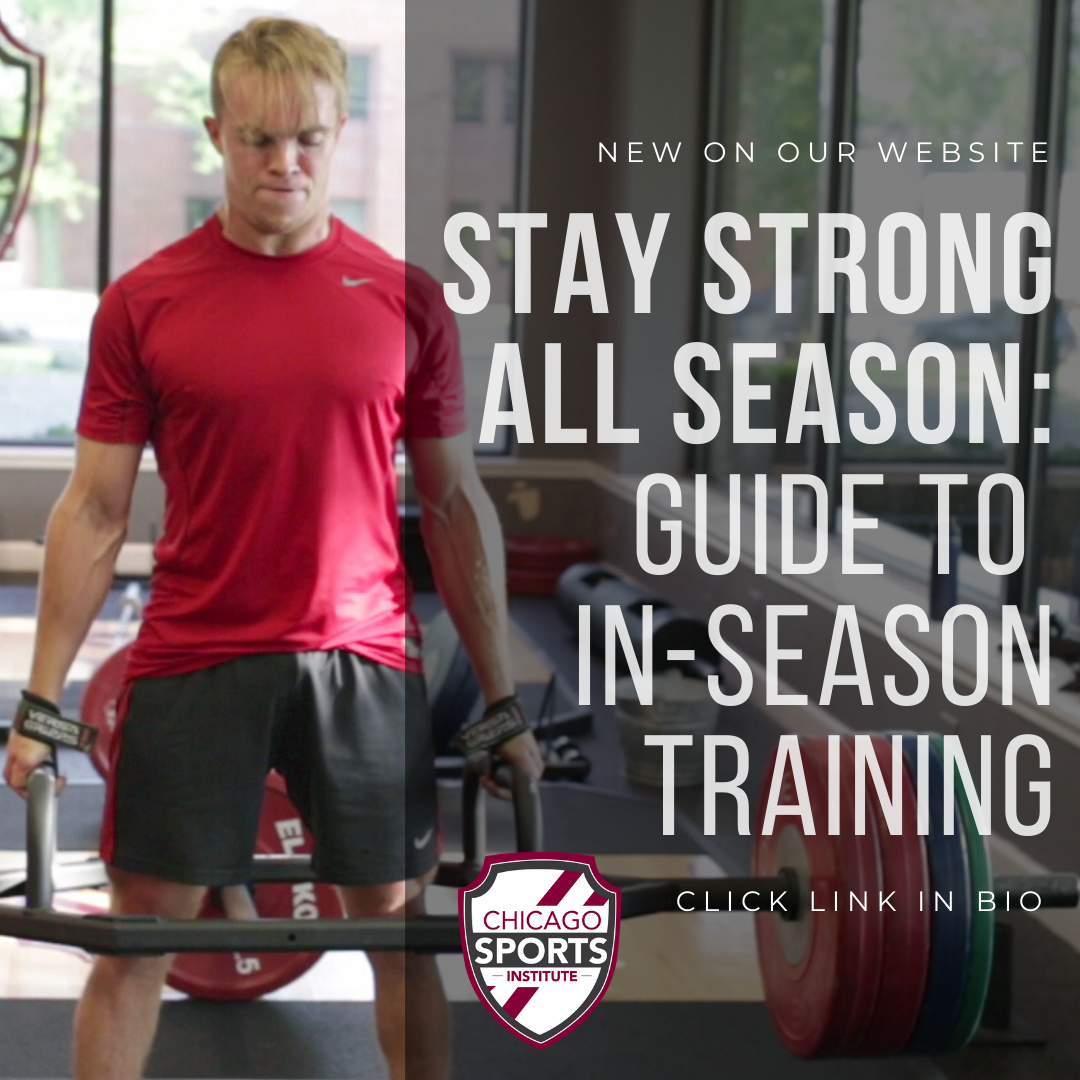
When I reevaluate players who haven’t trained throughout the season, I come across several issues. Typically, players have lost weight, size, strength, power, and developed structural imbalances or been sidelined by injuries. What I don’t understand is why players train so hard all off-season only to let themselves go in-season. This is a huge mistake and will significantly set you back. The good news is it is easily correctable. Spring sports have kicked off, so I thought it would be a great time to give you a sneak peak at CSI’s in-season training recommendations for our Pro’s so they maintain what they’ve worked so hard to achieve this past off-season.
One of the more obvious issues during the season is that players lose weight and size. The main reasons for this are limited time to lift and infrequent meals due to the increased demands of practice, traveling for games, and film study/team meetings (and school for our student athletes). Decreased size naturally leads to decreased strength. The importance of strength in sports is apparent; however, a significant point to consider that is often overlooked is the accompanying increased risk for injury when strength levels decrease. As the season goes on and players continue to lose strength, muscle imbalances develop and their risk of injury goes up. One example I recently wrote about is the increased risk of ACL injury due to lack of strength.
The best way to maintain strength in-season is to preserve muscle mass, which can be done by lifting 2 days per week. I recommend training at least the day after a game and then again mid-week. The day after a game, focus on maintaining muscle mass by performing low volume, high intensity workouts, such as 2-4 sets per exercise for 6-10 reps. This is an appropriate stimulus to maintain size and strength throughout the season.
By reducing the volume of their workouts and keeping the intensity high, players stay strong while staying fresh. This is key to prevent overtraining. Players need to be fresh come game day, not exhausted from a week filled with practice, school, team meetings and long training sessions. In-season workouts are kept short – no more than 12-16 sets, and after warm-up should last about 35 minutes.
The types of lifts used in-season are crucial as well. Players are performing specific work throughout practices and game day so there is no need for extra conditioning, plyometrics or other so called sport-specific exercises. The focus should be on basic and compound lifts such as squats, bench, deadlifts and chins (and of course Olympic lift variations will be included mid-week to promote power and explosiveness). Any weak links that still need work can be addressed mid-week as well.
Below I outline a sample 2 days/week program.
Day After Game Workout »
A1 Barbell Back Squat 3×4-6
A2 Lying Leg Curl (Toes In) 3×3-5
B1 Neutral Thick Grip Chinup 3×4-6
B2 45 Degree Incline DB Press 3×4-6
C1 Seated Row 2×6-8
C2 Trap 3 Raise 2×10-12
C3 External Rotation on Knee 2×8-10
Mid-Week Workout »
A1 Power Clean 5×3
B1 One Arm DB Row 3×4-6
B2 Flat DB Press 3×4-6
B3 Reverse Hyper 3×6-8
Best of luck this season to all readers. Stay strong!
